The Serengeti big five facts
Serengeti big five, the northern circuit of Tanzania is a premier location renowned for its abundant animals, undulating grasslands, and expansive scenery. Serengeti National Park, encompassing 14,760 square kilometers, is renowned for the famous wildebeest migration, the Big Five, and a plethora of animal marvels. If you are contemplating an African vacation, the Serengeti is an essential destination not to be overlooked.
Regarding a visit to the Serengeti, observing all of the Big Five has been a priority for numerous visitors in this esteemed wildlife refuge. As specialists in the domain, we spoke with our clients regarding their preferred species to observe first during their Serengeti safari, and their response was rather impressive: “The Big Five.” This page will reveal the Big Five species, their whereabouts in the Serengeti, and safety precautions for encounters with them.
In that era, hunters traversed on foot to pursue animals for slaughter. They engaged in this activity for both recreation (trophy hunting) and sustenance. However, their hunting methods proved inadequate while attempting to capture a lion, leopard, elephant, buffalo, and black rhinoceros. Due of the considerable challenge of capturing these five creatures, hunters designated them collectively as the Big Five. Despite the name’s origins in a grim narrative, fortunately, these animals are not hunted nowadays. This is a handbook for each member of the Big Five.
The African lion (Panthera leo)
The lion is the predominant predator in Tanzania. The nation possesses the highest lion population globally, over 15,000 individuals. The Serengeti is home to over 4,000 lions, rendering it the park with the biggest lion population on Earth. These apex predators inhabit the expansive plains of the Serengeti.
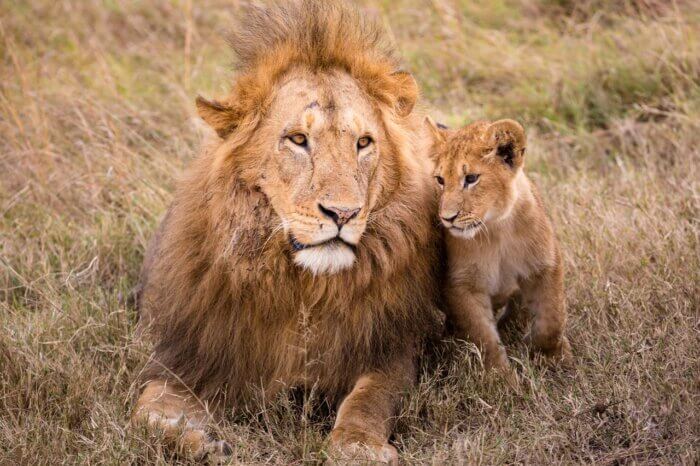
Lions exhibit territorial behavior. A lion pride consists of 15 to 30 individuals, which defend their territory against other lions and predators. Intense confrontations may arise when one pride encroaches onto the territory of another. The most captivating confrontation occurred on March 11, 2023, when Bob Junior, the reigning lion monarch of the Serengeti, was defeated by adversaries.
Lions exhibit a distinct division of labor. Male individuals defend their area and may seek to overpower a vulnerable pride. Females engage in hunting and nurture the cubs.
To observe lions, simply traverse the golden expanses of the Serengeti. Locations such as the Seronera Valley, Lobo, Kusini Plains, Kogatende, Moru Kopjes, and Grumeti. Lions primarily hunt at dawn and dusk, however they occasionally hunt throughout the day when opportunities present themselves.
Lions are formidable predators. It is imperative to exercise heightened caution throughout their observation. Remain in the vehicle. However, while encountering them during a nature walk or off-vehicle excursion, refrain from turning your back or fleeing. They are reported to ambush their prey from behind. Maintain eye contact, enlarge your presence, and gradually retreat while sustaining eye contact. Consistently evade the cubs. Whenever they cry, the mother swiftly responds with an assault.
The African elephant (Loxodonta africana)
Elephants are magnificent, large terrestrial mammals characterized by their distinctive gray coloration. The Serengeti is home to more than 7,000 elephants, distributed throughout the ecosystem.
These gentle giants are supposed to possess greater intelligence, as seen by their ability to pass the mirror test, according to specialists. They utilize memory to go to water sources or return home, and employ infrasound for communication.
Elephants are gregarious creatures that typically inhabit cohesive familial units led by a single senior matriarch related by blood. Females remain with the herd for extended periods, however males may depart to seek new herds to initiate their progeny or establish bachelor groups.
Elephants can be found in the Seronera Valley, Lobo, Kogatende, the Western Corridor, Ndutu, and in private reserves adjacent to Serengeti National Park.
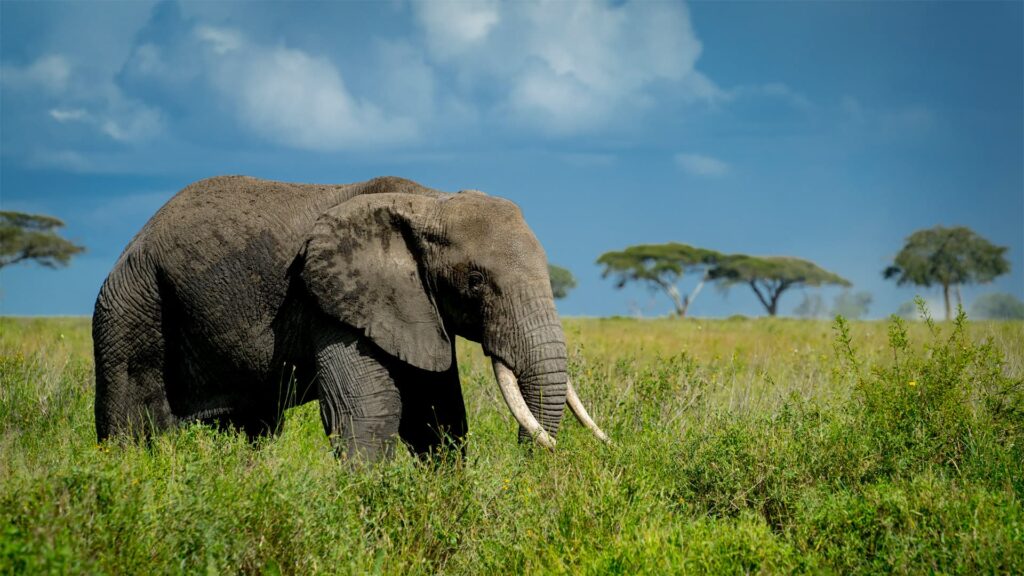
Elephants exhibit politeness; nonetheless, they can become very perilous when provoked, and their aggression may result in fatality. Do not depart the vehicle without informing the guide. They typically refrain from assaulting automobiles. Maintain a distance from them, be silent and composed, and avoid obstructing their progress. Avoid lonely bulls and be vigilant for warning indications such as ear spreading, head shaking, foot stamping, and trunk curling.
The African leopard (Panthera pardus)
The African leopard is an additional member of the Big Five species located in the Serengeti. This is a large feline distinguished by its golden-yellow coat adorned with dark rosettes. It favors solitude, typically residing in trees, and emerges at dawn and dark for foraging.
Leopards are solitary animals; males and females only converge for mating purposes. Subsequently, the female independently rears the cubs. Adult males depart from the group, whereas girls may remain with their mother for an extended period.
The leopard population in the Serengeti is remarkable, approximately 1,000, although sightings may need patience. The likelihood increases when driving along the banks of the Seronera River and rocky rocks. Examine trees such as acacia, fig, sausage, and marula (ebony trees).
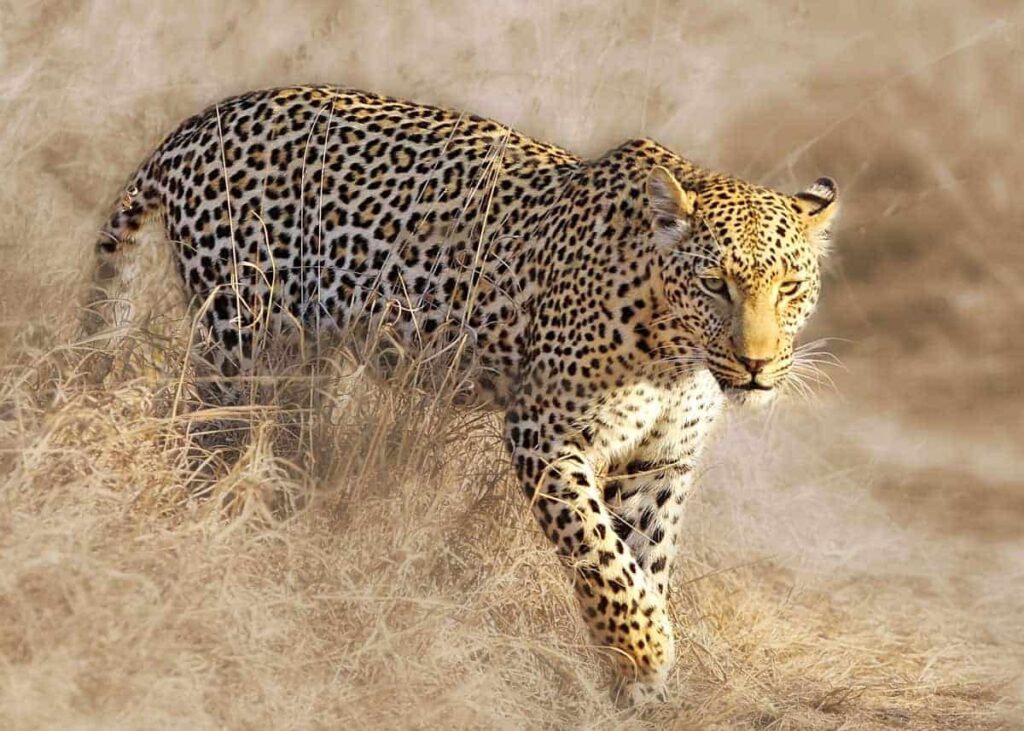
The leopard employs stealth in its hunting strategy. It will pursue the target for an extended duration prior to executing an ambush. This predator is considered more successful due to the occurrence occurring in an instant. It pulls its prey into trees to evade hyenas and lions.
The leopard is visually captivating yet exceedingly perilous when it lunges. Walking alone during twilight or nighttime poses a danger of assault. Refrain from turning your back upon encountering it. Retreat gradually while maintaining visual contact with the animal. Remain silent, as leopards are averse to noise; stay within the vehicle and at a safe distance.
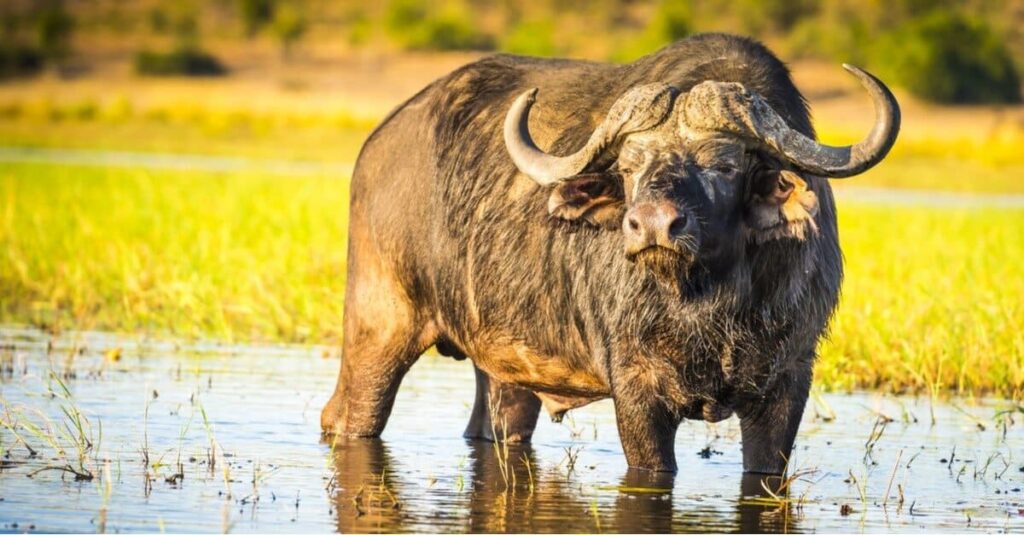
Cape buffalo (Syncerus caffer caffer)
The Cape buffalo is among the most numerous species in the Serengeti. Approximately 60,000 buffalo inhabit this region, constituting large herds exceeding 300 individuals. They favor grassy plains, open woodlands, and may sometimes inhabit dense forests. A number of bulls govern the herd and oversee mating activities.
Buffalo movements are quite predictable: they graze in grasslands or woodlands during the morning and thereafter approach water sites as the sun ascends. They immerse themselves in mud to shield their body and guard against biting insects.
Buffaloes are frequently observed during every game drive. They are plentiful in the Seronera Valley, Lobo, Western Corridor, southern Serengeti, and further locations.
When seeing this large and unpredictable animal, refrain from exiting the jeep, making sounds, and wearing fragrances. Exercise caution with single bulls. Isolation renders them very protective and may provoke aggression against any approaching entity.
Black rhino
The black rhinoceros is another sizable terrestrial species. It was prevalent in the 1960s and thrived in the African savannahs, but poaching has rendered it severely endangered. The Serengeti is home to more than 200 rhinoceroses. Locating this species may seem challenging due to its solitary nature; nevertheless, with our seasoned driver guide, we are assured you will encounter this remarkable mammal.
An interesting truth is that the term “black” is unrelated to its hue. It was likely termed “black” because of its dark appearance after wallowing in muck. Some propose that it was named to differentiate it from the white rhinoceros, which derives its name from the German term ‘weit,’ meaning wide lip.
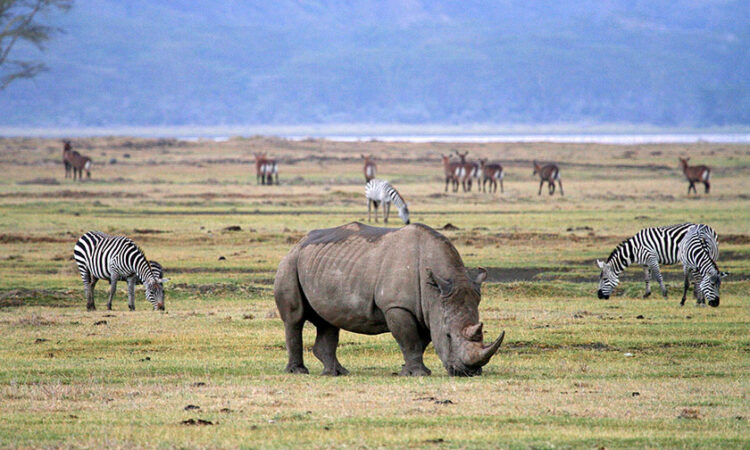
The black rhino is a browser, favoring shrubland, bushes, and trees more than grasslands. Consequently, traversing scrubland or shrubland in the northeastern Serengeti may yield an opportunity to observe this African mammal.
The black rhinoceros have limited vision but an acute sense of smell. Avoid wearing perfumes, as unfamiliar scents may provoke a reaction. Additionally, refrain from approaching or straying too far from the car. Place your confidence in your guidance, and all will be well.
Arusha Car Rental is prepared to facilitate your Big Five safari if you are inclined. If you have more inquiries, please contact our safari planners for assistance. I wish you the utmost success on your safari.
